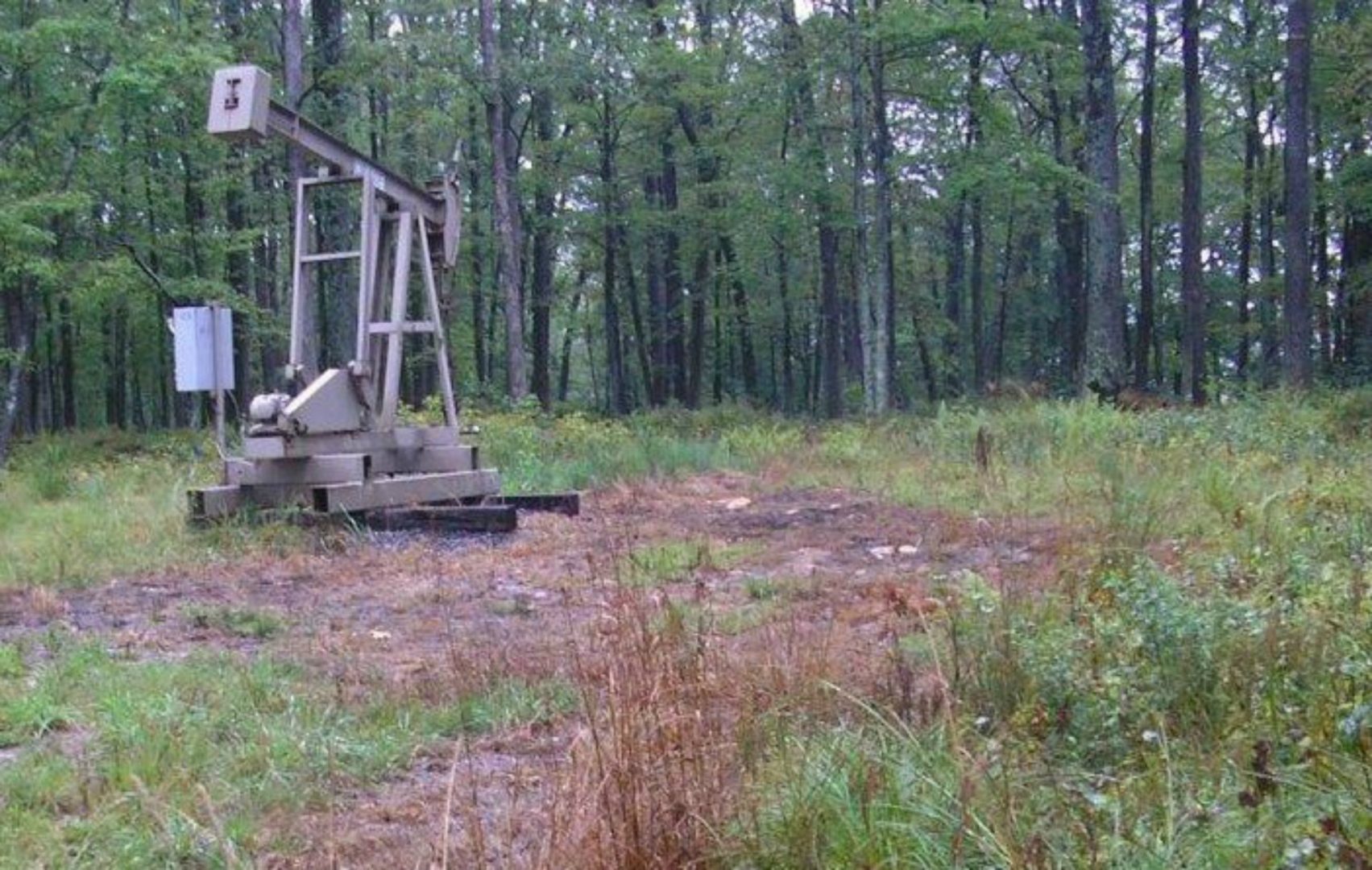
A conventional drilling site is prepared in Butler County, Pennsylvania in the winter of 2014.
Courtesy of Pennsylvania DEP


A conventional drilling site is prepared in Butler County, Pennsylvania in the winter of 2014.
Courtesy of Pennsylvania DEP

Courtesy of Pennsylvania DEP
A conventional drilling site is prepared in Butler County, Pennsylvania in the winter of 2014.
Pennsylvania is up against a clock to finish emissions regulations for oil and gas sites.
At risk are hundreds of millions of dollars in federal highway funds.
Earlier this year, the Environmental Protection Agency sent a letter to the state Department of Environmental Protection, warning it of impending sanctions if Pennsylvania did not submit plans to reduce emissions of volatile organic compounds at oil and gas sites by Dec. 16.
In June, the Environmental Quality Board approved a final rule governing VOCs at existing unconventional, fracked wells. The Department of Environmental Protection says the rule will have a co-benefit of reducing methane, a greenhouse gas up to 86 times more powerful than carbon dioxide over a 20-year period.
An earlier version of the rule included existing shallower, conventional wells. The Department of Environmental Protection separated the two industries in an attempt to avoid controversy and a delay of the rule.
Democratic Gov. Tom Wolf and the Republican-controlled legislature made an agreement in 2016 to regulate the two industries separately. Conventional drilling companies had filed a preliminary lawsuit to stop the rule.
Pennsylvania adopted a methane rule for oil and gas sites in 2018, but it only applied to future wells.
Democratic state Representative Greg Vitali, who sits on the EQB, said he has yet to see a rule for conventional sites.
“I don’t have confidence they’ll be done in time at all,” he said. “To the contrary, it looks like we’re running out of time.”
DEP did not respond to a request for comment on the status of the conventional rule.
In June, DEP said it hoped to have a conventional rule for the EQB to consider before the end of the year. After EQB votes, the rule would still need approval from the Independent Regulatory Review Commission and the Attorney General’s office.
The EQB, chaired by Acting DEP Secretary Ramez Ziadeh, has two meetings scheduled before the December deadline. The VOC rule is not on the agenda for the October meeting.
The federal government does not distinguish between conventional and unconventional wells in its guidelines.
Missing the deadline would trigger highway funding sanctions of between $500-$750 million in the next year.
According to the EPA, many VOCs form ground-level ozone by reacting with other pollutants in the presence of sunlight.
In a letter to House Environmental Resources and Energy committee chair Rep. Daryl Metcalfe (R-Butler), the state departments of environmental protection and transportation said sanctions will apply in any area of the commonwealth that doesn’t meet the national air quality standards for ozone. EPA says, under the federal Clean Air Act, sanctions will be triggered on the deadline if Pennsylvania does not have a final rule in place.
That could mean a loss of $188 million in Philadelphia County, $37 million in Allegheny County, $31 million in Lancaster County and $11 million in Berks County.
PennDOT said as state match money is reallocated from projects in those and other affected areas, the transportation impacts will be statewide and not limited to those areas.
The House Energy committee in August voted to disapprove of the unconventional regulations, setting up a possible delay. The House has ten legislative session days to act on the resolution before it expires. With the current calendar, the last day to vote is Nov. 15.
Vitali said the state is facing a financial deadline and a climate one. He’s criticized the methane rules as weak, but necessary to make some progress in reducing emissions.
Republican lawmakers who control the legislature are disinclined to impose regulations on conventional drilling companies, which are often smaller operations than the large companies fracking in the Marcellus shale.
The rule for unconventional companies is not opposed by that industry, as the emissions controls are already seen as a best practice.
StateImpact Pennsylvania is a collaboration among WITF, WHYY, and the Allegheny Front. Reporters Reid Frazier, Rachel McDevitt and Susan Phillips cover the commonwealth’s energy economy. Read their reports on this site, and hear them on public radio stations across Pennsylvania.
(listed by story count)
StateImpact Pennsylvania is a collaboration among WITF, WHYY, and the Allegheny Front. Reporters Reid Frazier, Rachel McDevitt and Susan Phillips cover the commonwealth’s energy economy. Read their reports on this site, and hear them on public radio stations across Pennsylvania.
Climate Solutions, a collaboration of news organizations, educational institutions and a theater company, uses engagement, education and storytelling to help central Pennsylvanians toward climate change literacy, resilience and adaptation. Our work will amplify how people are finding solutions to the challenges presented by a warming world.